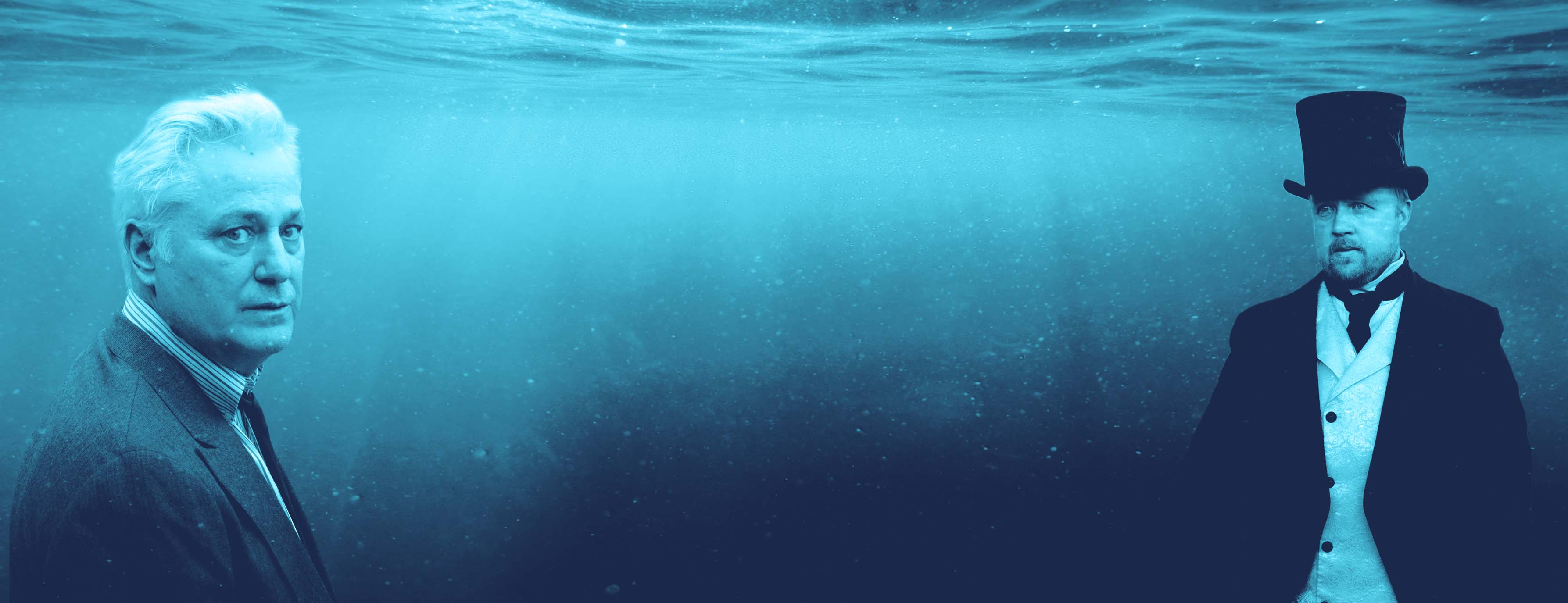When Dr. Stockmann discovers that the water in the small Norwegian town in which he is the resident physician has been contaminated, he does what any responsible citizen would do: reports it to the authorities. But Stockmann’s good deed has the potential to ruin the town’s reputation as a popular spa destination, and instead of being hailed as a hero, Stockmann is labeled an enemy of the people. Arthur Miller’s adaptation of Henrik Ibsen’s classic drama is a classic in itself, a penetrating exploration of what happens when the truth comes up against the will of the majority.
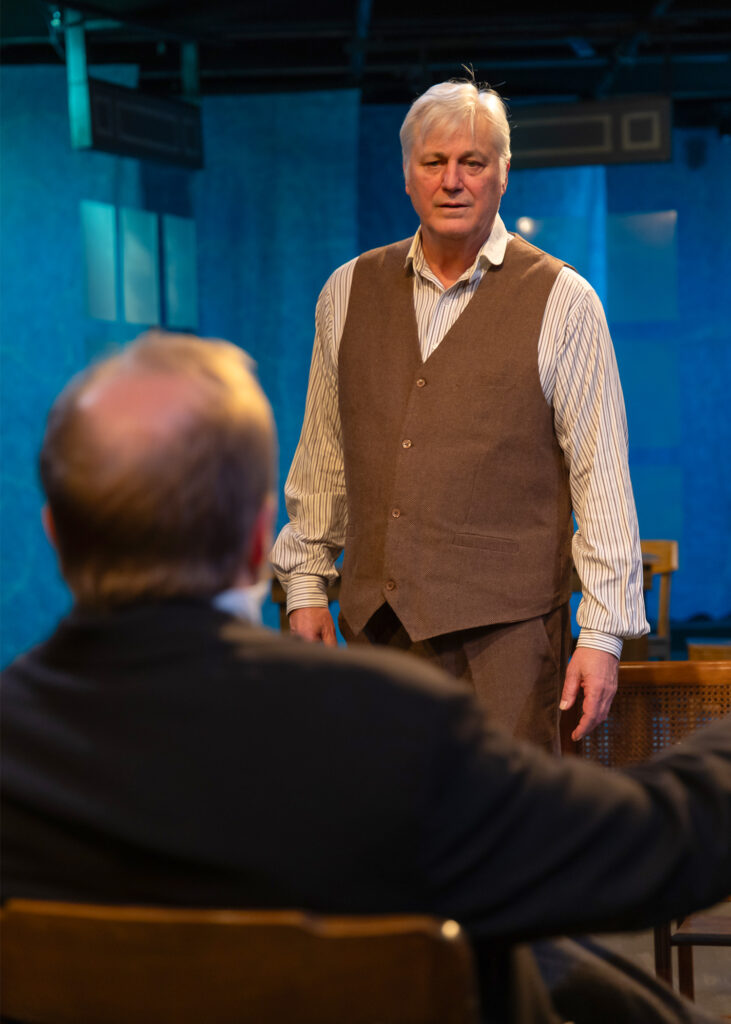
A mid-sized city in a Norwegian town around 1910. The action moves between various locations in the Stockmann home, the newspaper office, and Captain Horster’s home.
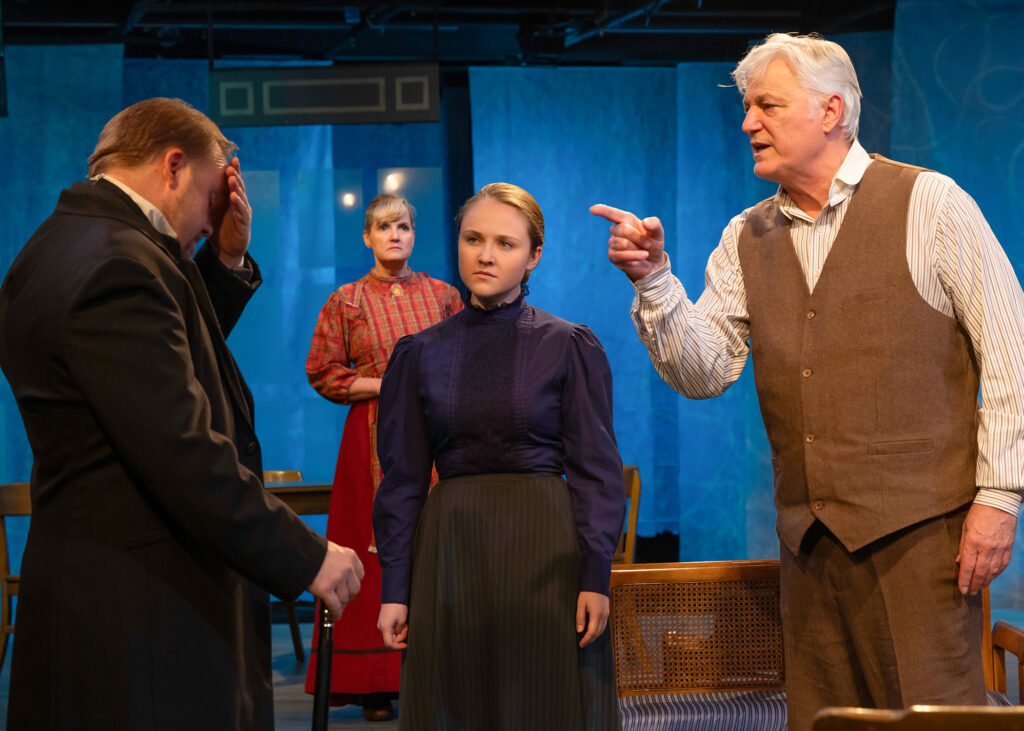
DR. THOMAS STOCKMANN
Highly intelligent and curious. He’s seen more of the world than most of his small town. Unafraid of authority, he can lack self-awareness. Can be impulsive. Devoted to family and his patients. His highs are high and his lows are low.
PETER STOCKMANN
The Mayor, Chief of Police, Chairman of the Board at the Baths. The authority of his small town. Cares for his brother but has little patience for the way his brother moves through the world. Aware of how the world perceives him. A workaholic. Unmarried. Anxious.
CATHERINE STOCKMANN
Dr. Stockmann’s wife. Cares deeply for her husband and family and devotes herself to supporting them. Highly intelligent. Self-aware and conscious of the limitations of the 19th century home life. Sensitive to her husband’s highs and lows and deliberate in her tactics to guide him.
MORTEN KIIL
Catherine’s father. A master tanner. Rich but allows his family to think he’s barely scraping by. Mischievous with an edge to him. Does not take well to insults or slights. Misanthropic.
PETRA STOCKMANN
A teacher. Fiercely intelligent. Idolizes her father. Has a strong moral center. Rejects traditional femininity and gender norms for a 19th century woman. Incandescent.
BRINA & MORTEN STOCKMANN
Dr. Stockmann’s younger children. At the end of the play, Dr. Stockmann decides to educate Brina and Morten, according to his own principles so that they can lead a new generation of independent and politically righteous people.
HOVSTAD
Editor of the town’s leftist newspaper, The People’s Daily Messenger. Considers themselves and (loudly) professes to be a revolutionary but falters when their ideals are put to the test.
BILLING
An assistant at the newspaper. Considers himself to be a radical and condemns the government but is also politically ambitious. Is infatuated with Petra Stockmann.
ASLAKSEN
Prints the newspaper which gives him a degree of editorial control. Chairman of the homeowner’s association and represents the town’s small business class. A proud and loud member of The Temperance Society. He loves moderation and abhors conflict.
CAPTAIN HORSTER
A ship captain. Has little interest in local politics. A loner. Has a strong moral compass. Loyal. Maybe the most intelligent of them all though he has the least formal education.
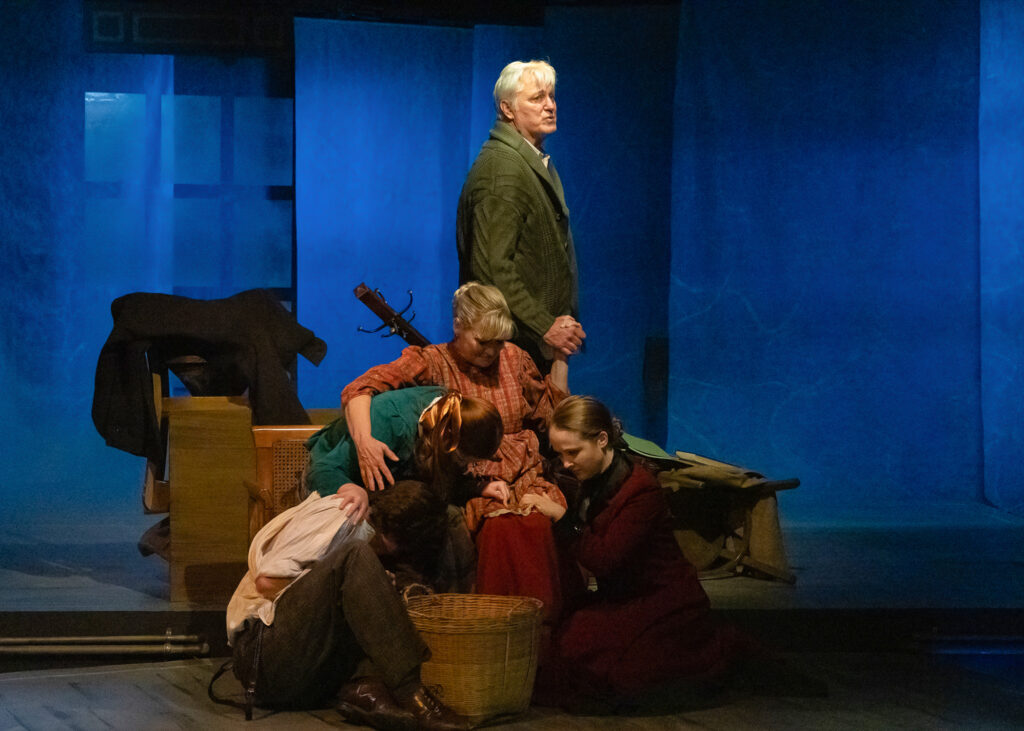
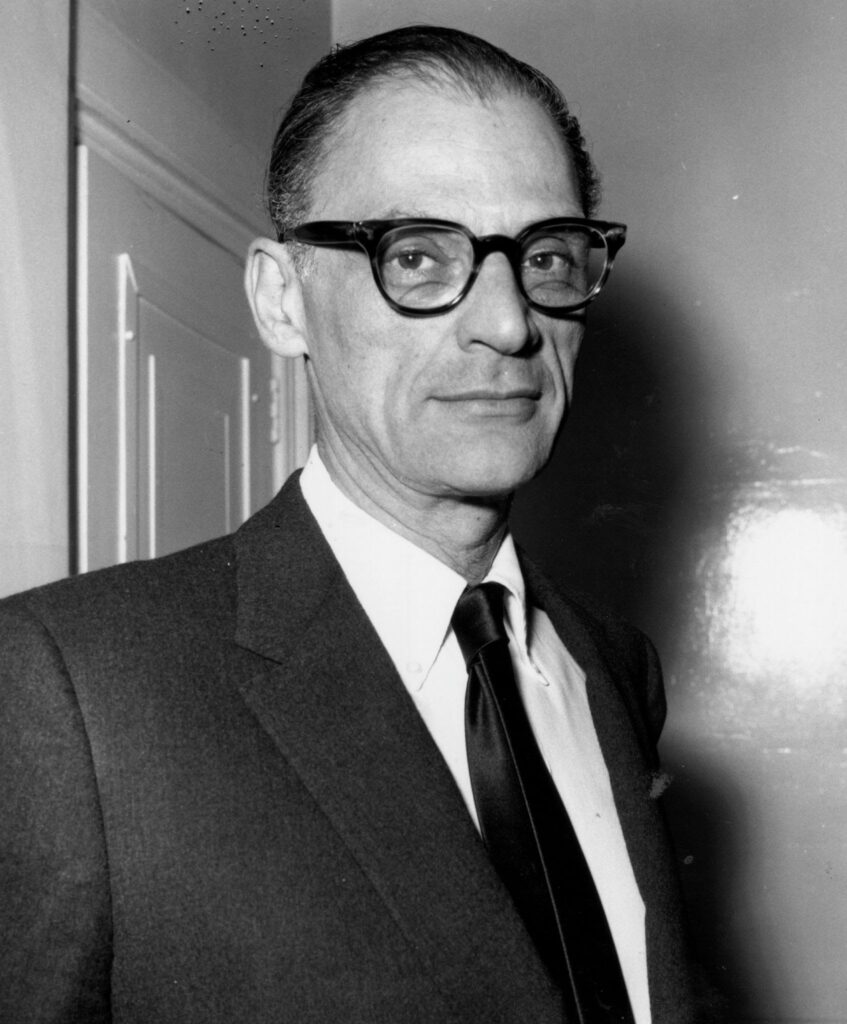 Arthur Miller, born October 17, 1915, in New York, New York, U.S., was an American playwright, who combined social awareness with a searching concern for his characters’ inner lives. He died on February 10, 2005 in Roxbury, Connecticut. Miller was shaped by the Great Depression, which brought financial ruin onto his father, a small manufacturer, and demonstrated to the young Miller the insecurity of modern existence. After graduation from high school he worked in a warehouse. With the money he earned he attended the University of Michigan (B.A., 1938), where he began to write plays. His first public success was with Focus (1945; 1962 made-for-television film), a novel about anti-Semitism. All My Sons (1947; 1948 film), a drama about a manufacturer of faulty war materials that strongly reflects the influence of Henrik Ibsen, was his first important play. It won Miller a Tony Award, and it was his first major collaboration with the director Elia Kazan, who also won a Tony. Miller adapted Ibsen’s An Enemy of the People in the 1950s to make the play more accessible and accepting to a 1950s audience, as opposed to Ibsen’s late 1800s audience.
Arthur Miller, born October 17, 1915, in New York, New York, U.S., was an American playwright, who combined social awareness with a searching concern for his characters’ inner lives. He died on February 10, 2005 in Roxbury, Connecticut. Miller was shaped by the Great Depression, which brought financial ruin onto his father, a small manufacturer, and demonstrated to the young Miller the insecurity of modern existence. After graduation from high school he worked in a warehouse. With the money he earned he attended the University of Michigan (B.A., 1938), where he began to write plays. His first public success was with Focus (1945; 1962 made-for-television film), a novel about anti-Semitism. All My Sons (1947; 1948 film), a drama about a manufacturer of faulty war materials that strongly reflects the influence of Henrik Ibsen, was his first important play. It won Miller a Tony Award, and it was his first major collaboration with the director Elia Kazan, who also won a Tony. Miller adapted Ibsen’s An Enemy of the People in the 1950s to make the play more accessible and accepting to a 1950s audience, as opposed to Ibsen’s late 1800s audience.
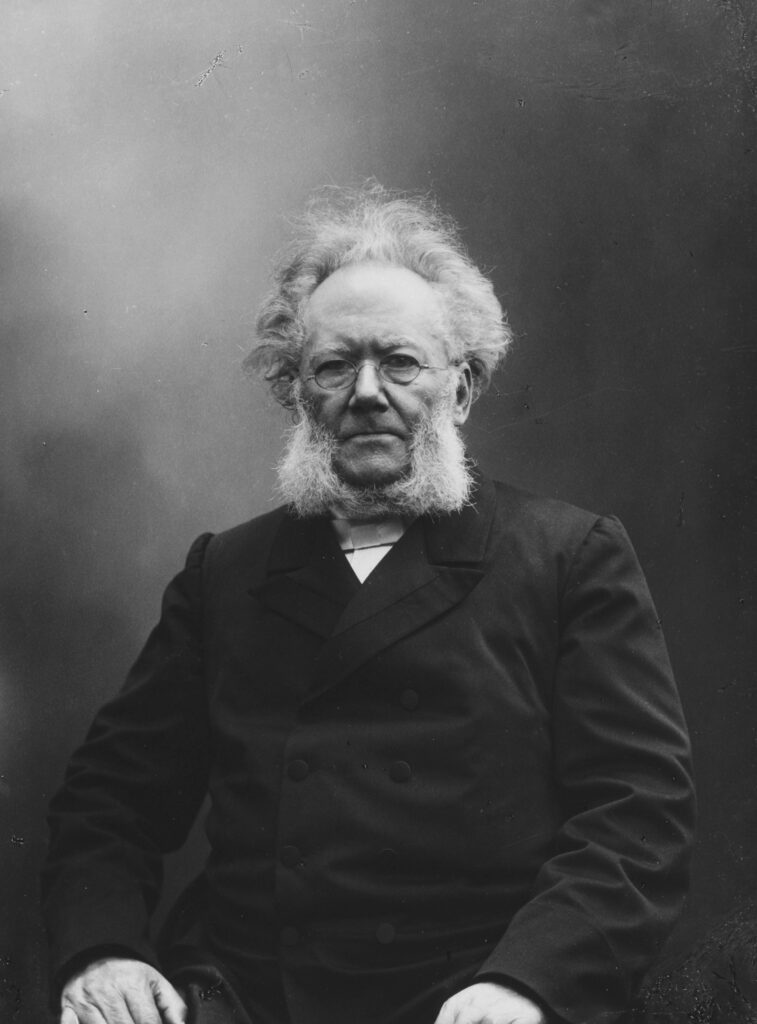 Henrik Ibsen was born on March 20, 1828, in the small coastal town of Skien, Norway. His relationship with his native country was often tumultuous, and he spent many years living and writing outside of Norway, in Italy and Germany. He returned to Norway in 1891 and died in Oslo (then called Christiania) in 1906. One of the world’s most renowned dramatists, he broke the bounds of theatrical tradition to create plays long-enduring in their pursuit of human experience. Known internationally during his lifetime, Ibsen’s works have remained subjects of extensive production and intense examination. With a body of work that includes Brand (1865), Peer Gynt (1867), The Pillars of Society (1877), A Doll’s House (1879), Ghosts (1881), An Enemy of the People (1882) and The Wild Duck (1884) among many others, Ibsen’s plays cover a wide range of thought and form. His views cannot be pigeonholed according to any single play, residing rather in a comprehensive understanding of his works as a body of work. Various as his work was, Ibsen focused always on the condition of human beings, spotlighting the impossibilities of life in society and prompting self-examination.
Henrik Ibsen was born on March 20, 1828, in the small coastal town of Skien, Norway. His relationship with his native country was often tumultuous, and he spent many years living and writing outside of Norway, in Italy and Germany. He returned to Norway in 1891 and died in Oslo (then called Christiania) in 1906. One of the world’s most renowned dramatists, he broke the bounds of theatrical tradition to create plays long-enduring in their pursuit of human experience. Known internationally during his lifetime, Ibsen’s works have remained subjects of extensive production and intense examination. With a body of work that includes Brand (1865), Peer Gynt (1867), The Pillars of Society (1877), A Doll’s House (1879), Ghosts (1881), An Enemy of the People (1882) and The Wild Duck (1884) among many others, Ibsen’s plays cover a wide range of thought and form. His views cannot be pigeonholed according to any single play, residing rather in a comprehensive understanding of his works as a body of work. Various as his work was, Ibsen focused always on the condition of human beings, spotlighting the impossibilities of life in society and prompting self-examination.
Photos by Marlee Melinda Andrews and Ryan Wasson


